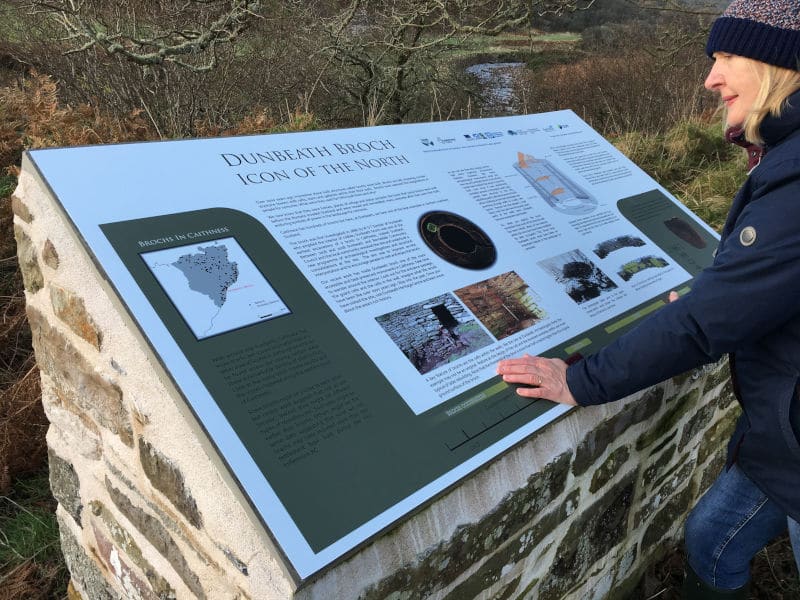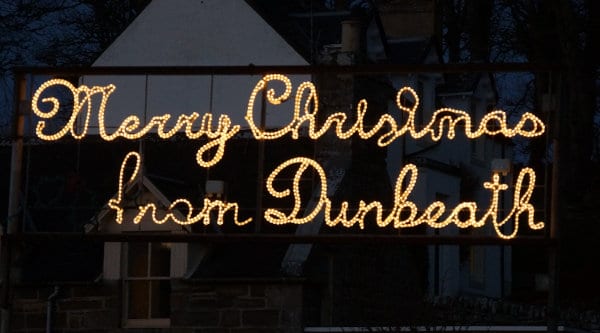The Dunbeath Broch project is now in its final stages and we’re delighted to share an update of what has been achieved over the last few months.
At the end of October, Jamie Humble from AOC Archaeology gave a fascinating talk to present the final results from the survey, excavation and consolidation work that was undertaken as part of the project. Jamie’s full presentation and notes can be downloaded and here’s a few of the key findings:
- Original form of the broch: The walls of the original structure would have been about 16 metres high and was built with approximately 2,300 tonnes of stone! The monument appears to have been constructed as a ‘true’ broch tower, with at least one guard cell off the entrance passage and a clockwise rising staircase, entered from a cell located in the south of the broch. This would have given access to a first floor intra-mural gallery, the lintels of which can be seen above the corbelling of the guard cell.
- When the broch was built: The broch was probably built in the early or middle Iron Age, possibly around the 4-5th centuries BC. At some point, the south side of the tower suffered a catastrophic collapse. Carbon dating indicates the broch wall, along with the construction of the intra-mural cell that you can see today, was rebuilt sometime between the 100BC to 400AD, or between 700 to 1000AD.
- Occupation of the broch: We can say that the broch was probably occupied intermittently over a period of a thousand years, from at the least the middle of the 1st century BC to the late 10th century AD.
- Resources of the people who lived here: The people who lived here had access to wide range of resources including domesticated and wild animals, a range of cultivated cereals and woodland resources, and deep water fish stocks. There is also evidence of iron working in the vicinity of the broch. The discovery of bone die pieces, made from cow or deer bone, at the site suggests people made time for leisure and game playing.
A key outcome of the project was to have an interpretation panel installed at the site, and this has been designed and printed. Because of the weather, we will have to wait until the Spring 2020 before it can be mounted on the stone plinth that is already in place, but here is a sneak preview of the panel below.

An information leaflet about the broch and its history has also been produced, and will be available free of charge from a number of outlets and tourist attractions in the area from January 2020. If you can’t wait to pick up your hard copy, you can download a copy of the leaflet.
The Community Council would like to thank the funders, landowners, and everyone who contributed to the success of this exciting project. The conservation programme has preserved the broch for visitors and future generations to enjoy, and has added new understanding about the history and heritage of this ‘Icon of the North’.
Latest News
 News from the Area
News from the Area
- Norscot to showcase its expertise at Homebuilding and Renovating Show
- Travelling gallery set to visit three Highland venues next week
- WATCH: Lyth theatre production challenges stereotypes of ageing
- Moray West wind farm blades ‘bigger than Wembley pitch’ installed off Caithness coast
- Loch Ness and the Cairngorms among top 5 most Instagrammable spots in Scotland



